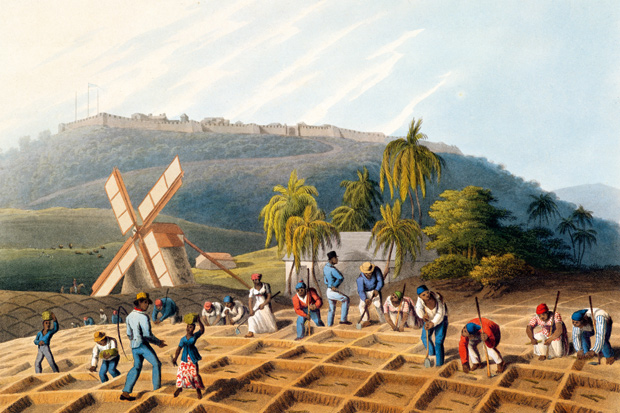Ta-Nehisi Coates’s debut novel transports us to antebellum Virginia, when the tobacco wealth of years gone by is dwindling, due to soil exhaustion. He introduces us to the world of the ‘Quality’ (slave owners) and that of the ‘Tasked’ (the enslaved), in which slave-owning is framed as a Lacanian failure on the part of the slaveholder: ‘They did not know us, because not knowing was essential to their power.’
The Water Dancer
centres on Hiram Walker, a slave whose mother was long ago sold on and whose father is the plantation owner. Hiram gets involved with the Underground (Railroad, though it goes by plain ‘Underground’ here), forging freedom papers and planning slave rescues. He is recruited by Corrine Quinn, a white woman who, when her family wanted her educated only to the point of eligibility or ‘ornamental ignorance’, fell in with the abolitionists and, upon her parents’ death, turned the family seat over to an Underground station. Harriet Tubman makes an appearance, possessing powers of ‘conduction’, the ability magically to transport the enslaved to places of safety. Hiram has those powers too, and sets about trying to master them.
Amid a series of plot yo-yos, enslaved men and women appear like dramatis personae to tell their tales, at such frequency that the flight north becomes an almost Chaucerian meta-narrative. When Hiram is left alone with a folder of slave accounts in the Underground station, describing them as ‘thrilling as any Ivanhoe or Rob Roy’, it is a deft comment on the deliberate construction of national self-image according to a certain world view. The Water Dancer, like Coates’s journalism, is here to recentre the African-American experience in American life, and we are lucky to have it.
One might say that this novel resembles the work of Toni Morrison and James Baldwin, and that would not be wrong: Coates is
a stickler for honouring his elders and placing himself in a lineage of African-American intellectuals. He shares their cadences, their moral intensity, the touches of magical realism. But making these comparisons on their own risks being an act of passive-aggressive critical back-shelving. The Water Dancer is also an extremely traditional novel, in essence a 19th-century bildungs-
roman in the manner of Gaskell or Dickens: there is the same meticulous length, the pathos, the formality of inner voice — and the packaging of polemic (be it the working poor or the enslaved). Like its biracial protagonist, the book has a dual lineage.






Comments